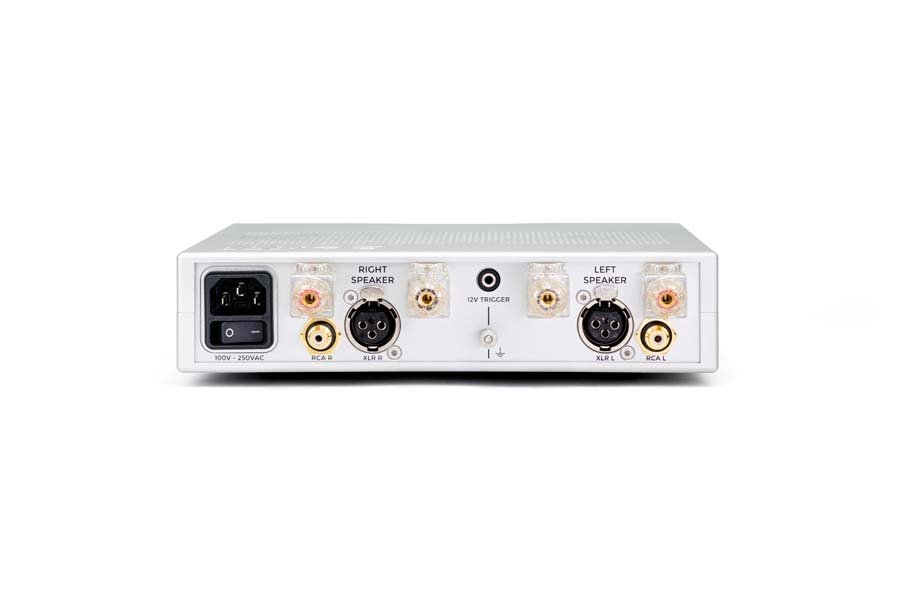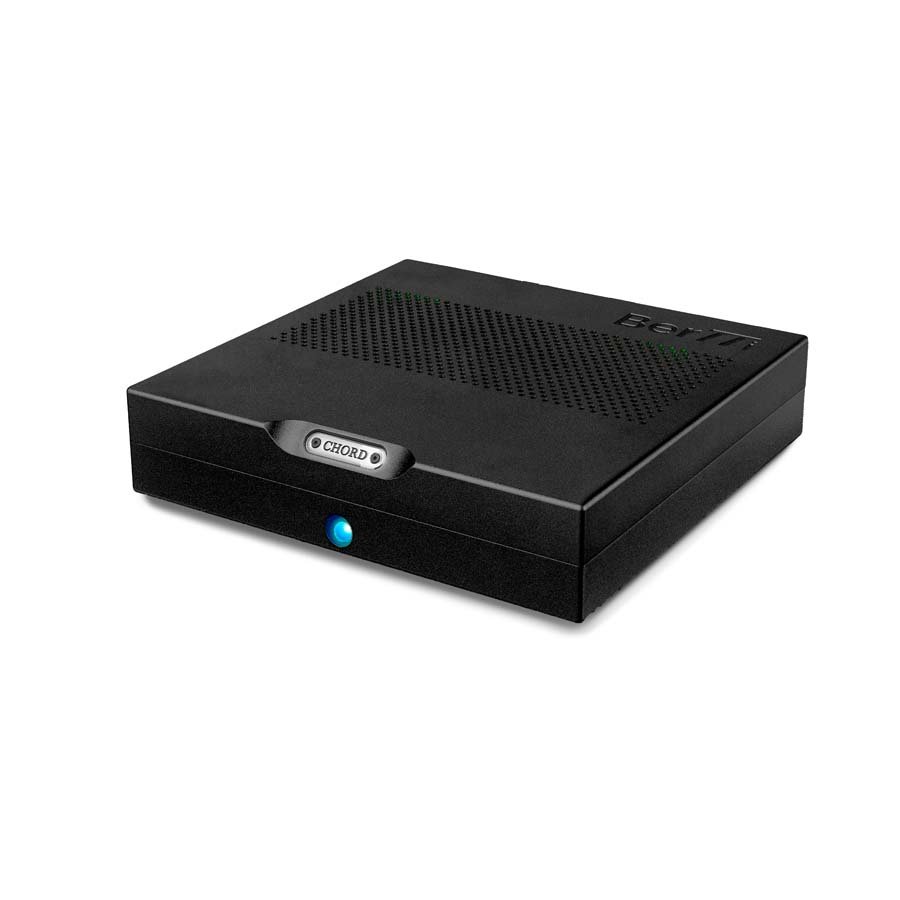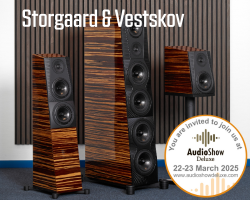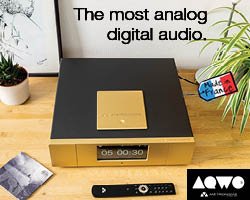CHORD ELECTRONICS BerTTi POWER AMPLIFIER REVIEW
BerTTi from Chord Electronics is a £4000 (all but a pound coin) 75 WPC power amplifier with a small form factor ideal for those looking for a more manageable HiFi setup. Chris Ballie takes a listen for HiFi PiG
Everybody knows that if you want the best performance available, you must have big, ugly boxes. Chord’s John Franks believes not. The goal of the company’s recently launched BerTTi amplifier, reviewed here, is to prove that by use of clever design and technology, music lovers can enjoy the kind of performance the British brand’s Ultima range is famed for without turning their living room into something resembling the control room of The Starship Enterprise. Priced at £3,999.00, BerTTi replaces TToby, which was often sold and used in conjunction with the Chord Hugo TT2. Whereas TToby made do with 50 watts per channel into 8ohms, BerTTi has 75watts into the same load. My review sample was accompanied by the talented duo that is the Hugo TT2 and Hugo Mscaler, which made up an extremely compact and, in my opinion, extremely attractive high-end system. I will mention that Chord recently dropped the price of both Hugo TT2 and Mscaler by £1,000 (now £3,995) and £700 (now £3495) respectively. This says a lot about the brand, which chose to pass on the recent price drops of key digital components to its customers. They have also dropped the prices of three other components in their portfolio.
Chord Electronics is one of the few significant UK-based audio brands that are owned by their chief designer rather than a financial group or an overseas corporation. John Franks set up the Maidstone-based company in 1989, following a successful career designing and building power supplies for aviation electronics. The brand manufactures all of its products in-house. I managed to grab the following quotation from John regarding the design principles of BerTTi;
When I designed BerTTi, I could easily have matched the baseline specifications with far-skimpier electronics, as seen in many competitors, but that’s not what Chord Electronics is about. I believe in giving our amplifiers’ output stages the massive control of both voltage swings and, for superb control, excess super-fast current availability. Fundamentally, this is why, although BerTTi is not the largest of amplifiers, physically, its power capabilities massively exceed similar-sized products.

BUILD AND FEATURES OF CHORD BerTTi
BerTTi is a fully balanced design that benefits from having two modified power supplies and an auxiliary power rail at the front end, which provides extra voltage for the custom-made MOSFETS. BerTTi has clearly been designed to fit a system aesthetically based around the company’s Hugo TT2, which may be accompanied by the Hugo Mscaler. The accompanying PR photos show the aforementioned three products ‘stacked’ on top of each other. Considering how hot BerTTi ran when I cranked up the volume, I feel that side-by-side or on a small rack may be better. BerTTi, like Chords’ other products, is available in either jet black or argent silver. My review samples were jet black, which I prefer. Indeed, I chose black for my own Hugo 2 and 2Go and still love how they look. There is just one button at the front of the BerTTi, which glows red when in standby mode and blue when playing music. Now for a minor operational gripe. BerTTi has a 12v trigger socket, yet Hugo 2TT does not. I can switch on Hugo TT2 via the remote, but I still have to walk over to BerTTi and press the power button to get music. So perhaps a 12v trigger output would be an excellent addition for the next generation of Hugo TT2. Being a fully balanced design, you get XLR input sockets, but RCAs are also provided; I used the former with Townshend’s F1 Fractal interconnects. Power enters via a 10amp IEC power input socket, into which I used a Titan Audio Helios Signature cable. The amplifier uses an advanced switch-mode power supply, in common with other products in the Chord stable. John Frank’s expertise is in ultra-high-frequency power supply design, and such is integral to the concept of his products. There is also a ground socket, presumably to help eliminate hum if experienced.

SOUND QUALITY
I listened to this system for Chord via my Totem Forest Signature speakers. The source was the Melco N1-S38, as reviewed in this magazine this September. Townshend interconnects and speaker cables, the digital connection was via USB, using the USB II-R cable from CAD. The Hugo TT2 works as a DAC/Pre-amplifier via its digital volume control, which is stepped. I did notice a few jumps in volume across its range, but adding an analogue preamp would possibly defeat the object of such a compact system. Before we start talking about the overall sonic characteristics of the system, I will mention my experience with the various settings of the Hugo Mscaler. Surprisingly, for me, at least, I often found myself preferring the non-upsampled setting. For sure, upsampling increases the level of detail significantly and helps you to hear into the mix of dense recordings. It brings out ambient detail, which tells you about the recorded acoustic. However, sometimes I felt that upsampling thinned out the sound a little too much and took away some of the pleasant warmth I enjoyed with particular recordings. I emphasise here that this is what I experienced via my speakers, and my comments reflect upon the type of sonic balance that pleases me, so it is worth experimenting. I consider the Hugo TT2 one of the best DACs at its price point and often beyond. I own both the Mojo and Hugo 2 machines, and the TT2 considerably improves upon the latter in terms of resolution, focus, and transparency.


The first thing I noted when I began listening to this setup was how clean yet weighty it sounded. My Totem speakers do like current, so it initially surprised me that BerTTi delivered such a big sound and could control the bass, which is not always the case when you pair these speakers with amplifiers with less than 100 watts per channel. The soundstage has width beyond the speakers’ cabinets, although not quite to the extent of my more expensive Moon amplifier, which similarly could project the sound a little further to the fore of the soundstage and offer slightly better depth perception. There was no unpleasant harshness or unnatural exaggeration of sibilants, which recordings such as Cowboy Junkies Trinity Sessions or David Sylvian’s Secrets of the Beehive will reveal if a system has such an issue, and there was not. The music sounded dynamic and involving, with good timing qualities.
I do not tend to listen to much classical music, but I am trying to broaden my horizons. A 24/96 Qobuz stream of Anne-Sophie Mutter’s latest release, Bach, Bologne, Previn, Vivaldi and Williams, sounded natural, dynamic, and with accurate image placement within the soundstage. This system paints a great soundstage, which renders height information and lateral particularly well. Another classical album I tried, Dvòrak: The Complete Piano Trios from Boris Giltburg – Qobuz 24/192, showed that piano tones were exceptionally well rendered.



Kerala Dust’s version of Fleetwood Mac’s The Chain (Qobuz 16/44) was presented in a dynamic and lively fashion within a tall and wide soundstage that projected well outside the cabinets of my speakers. The bass was as full, deep, and weighty as I could wish, and the vocals sounded as lush and breathy as I have experienced. Compared to the best equipment I have at home, perhaps the music could have expanded into the room a little further, especially during the crescendo, but let’s remember this is a 75-watt amp; Chord Electronics produces a range of more powerful and expensive units. A CD rip of John Martyn’s The Church With One Bell again portrayed this system’s fine sense of weight and bass power. Here, John’s guitar glistened, and I felt the tone was naturally presented. The top end was clean, and the cymbals had a natural shimmer and were well-resolved. The recorded acoustic was well represented, perhaps not quite to the extent you get with more expensive gear, but only noticeable by direct comparison.



QUIBBLES
In comparison to certain other amplifiers that I have had at home recently and indeed my own Moon 600i, at times, I missed an extra sense of openness and air to the high frequencies, although, to be honest, this was not something I was conscious of whilst enjoying the music on this system, and I only considered whilst listening critically. And please, Chord, put a 12v trigger output on the TT2.
CONCLUSION
I think BerTTi will prove to be a very popular product for Chord Electronics, especially for Hugo TT2 users who do not want to give up a significant part of their living space to house their music system. BerTTi sounds far bigger and weightier than its size might suggest.
Musically, it was never less than enjoyable, and you would have to make compromises elsewhere to beat it, not least financially. I was impressed at how fast, uncluttered and dynamic the music sounded, without any unwanted brightness or forwardness. A valve or Class A amp may sound sweeter and organic, but you are unlikely to get the same kind of power, dynamic range, or bass control for similar money without other compromises.
AT A GLANCE
Build Quality and Features:
It is a typical example of Chord’s fine and attractive casework that feels built to last
Nice to see both XLR and RCA inputs
Sound Quality:
Dynamic, weighty, and uncluttered presentation that is thoroughly musical, accurate soundstage, music via BerTTi sounds natural and enjoyable
Value For Money:
Whilst not cheap, I think that Chord has got the price of BerTTi about right
It is possible to get a different kind of sonic presentation for similar money, but not necessarily better overall, and most alternatives will take up a lot more space than BerTTi
We Loved:
Dynamic and weighty presentation, yet with a natural balance that has no nasty edges
It sounds good with all kinds of music and takes up very little space
We Didn’t Love So Much:
Perhaps it could sound a little airier and more open, but it is the cheapest amp in Chord’s Ultima range
As a system, Hugo TT2 needs a 12v trigger
BerTTi can get quite hot, so it needs some space around it
Elevator Pitch Review: BerTTi is an attractive and compact power amplifier that compliments Chord’s products, particularly the Hugo TT2 and Mscaler used for this review. BerTTi’s weighty and powerful sound belies its dimensions and was never less than a pleasure to listen to. The system as a whole proves that it is possible to enjoy top-quality sound without compromising your living space.
Price: £3995, $5250, €4995
Chris Baillie
SUPPLIED TECHNICAL SPECIFICATIONS
Output Power: 75 W into 8 Ω
Frequency Range: 5 Hz-100 kHz +/- 0.5 dB
THD: 0.008%
Signal-to-Noise Ratio: 87 dB (A-weighted)
Input Impedance: 100kΩ Unbalanced/Balanced
Input impedance: 0.78 V
Gain: 30dB
Dimensions: 59 mm (H) 235 mm (W) 256 mm (D)
Weight: 3.75kG





















































































































































































